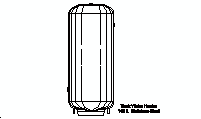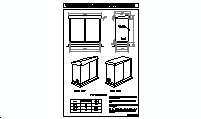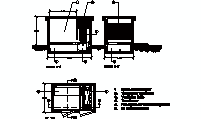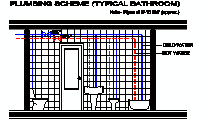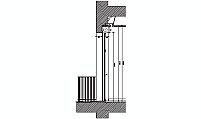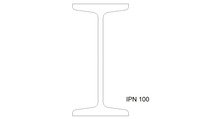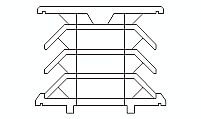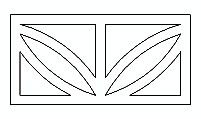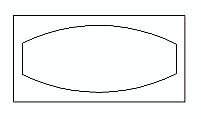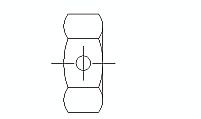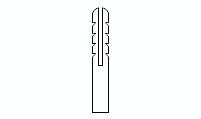CAD Blocks categories
 3D models
3D models home furniture
home furniture sanitary ware - bathrooms
sanitary ware - bathrooms professional equipment
professional equipment doors and windows
doors and windows people and animals
people and animals plants and trees
plants and trees vehicles - transports
vehicles - transports architectural details
architectural details mechanical - electrical
mechanical - electrical urban planning - civil works
urban planning - civil works safety health construction
safety health construction accessible design
accessible design drawing sheet
drawing sheet signals
signals construction machinery
construction machinery accessories and objects
accessories and objects maps and street maps
maps and street maps
Fire Extinguisher CAD Block in Front View
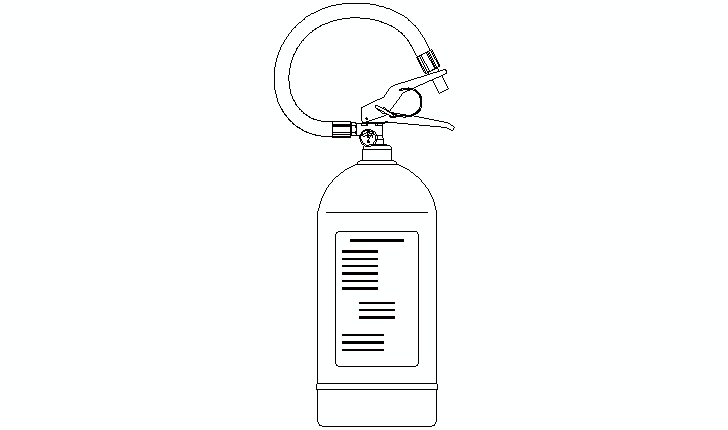
size: 18 kb
category: electrical, mechanical and HVAC
related categories:
description: CAD drawing of a fire extinguisher in front elevation, featuring a hose, nozzle, safety seal, pressure gauge, activation lever, and instruction label.
file extension: .dwg CAD - AutoCAD software
Features, Dimensions, and Standards of Fire Extinguisher
Detailed Design and Components of the Fire Extinguisher
The front elevation of the fire extinguisher showcases its essential components, including the hose and nozzle for directing the extinguishing agent, the pressure gauge to indicate operational readiness, and the safety seal ensuring the extinguisher has not been tampered with. The activation lever allows the controlled release of the extinguishing agent, while the instruction label provides clear usage steps. This detailed representation helps identify how each part works in unison to extinguish fires effectively.
Fire extinguishers are available in various configurations. Portable designs, such as the one depicted in the CAD block, are common in residential and commercial spaces. Larger extinguishers, like wheeled units, serve industrial facilities. The CAD block provides enough flexibility to integrate these designs into building layouts, ensuring comprehensive safety planning.
Common Dimensions and Size Variants
Fire extinguishers typically measure 14 inches (0.36 m) to 24 inches (0.61 m) in height, with diameters between 3.5 inches (0.09 m) and 7 inches (0.18 m). These dimensions are standard across residential, commercial, and industrial applications, making the CAD block suitable for multiple project types.
The extinguisher’s capacity ranges from 5 lbs (2.27 kg) to 10 lbs (4.54 kg), making it practical for light to moderate fire suppression. The hose length is approximately 18 inches (0.46 m), and the nozzle diameter is consistent with industry specifications. These measurements ensure effective deployment and compatibility with most regulatory requirements.
FAQs on Construction and Integration
- How is a fire extinguisher mounted?
- Fire extinguishers are mounted using wall brackets or installed in recessed or surface-mounted cabinets. They are typically placed between 3.5 feet (1.07 m) and 5 feet (1.52 m) above the floor, ensuring accessibility during emergencies and compliance with safety codes.
- What materials are used for construction?
- Fire extinguisher bodies are usually made of steel or aluminum, ensuring durability under pressure. Hoses are constructed from flexible rubber, and components like nozzles and valves are typically made of corrosion-resistant alloys or plastics.
- How do you ensure proper functionality?
- Inspections involve checking the pressure gauge, ensuring the safety seal is intact, and verifying that the hose and nozzle are clear. Recharging is mandatory after every use and annually for maintenance, as per industry guidelines.
- How can this CAD block be used?
- This CAD block is ideal for architectural plans, emergency layouts, and construction documentation. Its detailed design ensures accurate placement in safety planning and regulatory compliance efforts.
- Can this design be customized?
- Yes, architects and engineers can modify the dimensions and features in CAD software to meet specific project needs or adapt to local fire safety regulations.
Advantages of Using This Fire Extinguisher Design
This fire extinguisher CAD block provides numerous advantages, including precise representation of essential features like the pressure gauge, safety seal, and activation lever. These details ensure accuracy in emergency plans and compliance with safety regulations.
History and Evolution of Fire Extinguishers
Fire extinguishers were first developed in the 18th century, using basic manual pumps. Modern designs emerged in the 20th century, incorporating pressurized systems and more effective extinguishing agents. Innovations like portable models and eco-friendly agents have improved usability and sustainability over time.
In Europe, CO2 extinguishers are widely used, while compact aerosol models are popular in Asia. These adaptations cater to different fire hazards and environments, ensuring safety standards are met globally. Advances in automation and agent efficiency continue to define the future of fire suppression.






